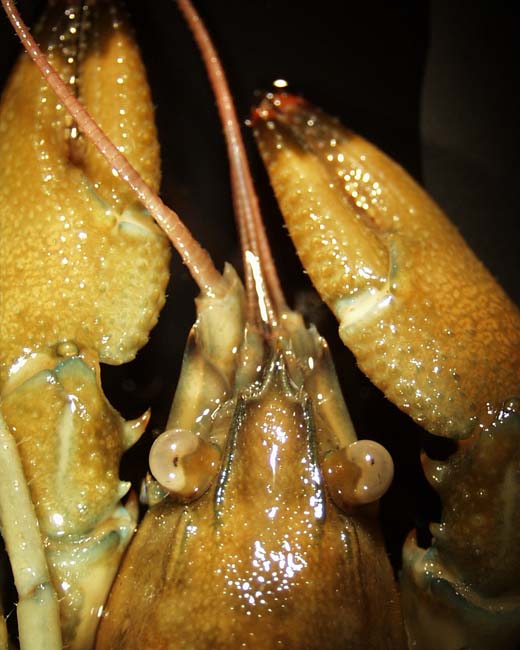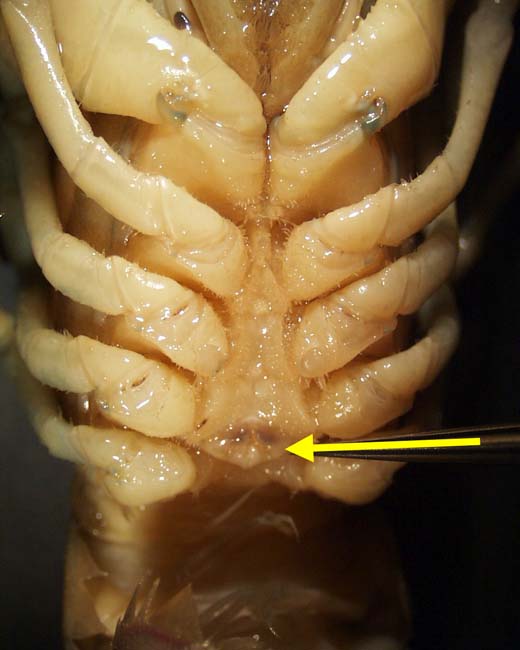
THE XERCES SOCIETY FOR INVERTEBRATE CONSERVATION Aquatic Invertebrates in Pacific Northwest Freshwater Wetlands |
| Identify taxa |
Orconectes spp. (introduced crayfish) |
Orconectes species are native east of the Rocky Mountains. They have been introduced throughout the world, and at least three species are known in the western US. One was introduced into the Rogue River Basin and has essentially replaced native crayfish wherever it has shown up. The three introduced species are listed below with links to information on the species outside of this guide. Their tolerance to human disturbance, feeding habits (omnivores), and behaviors are not all too different from the native species. Unlike Pacifastacus, species of Orconectes will have either thumb-like lobes on one of the bottom segments of at least one pair of legs (males) or will have a hard, rounded, raised plate between the last two pairs of legs (females). An on-line key to Orconectes is available online from the Carnegie Museum of Natural History Section of Invertebrate Zoology here. The key is designed by Dr.James W. Fetzner Jr. Orconectes spp. - crayfish introduced into the
Northwest |
Size: xlarge Identifying feature(s): tail and claws are well-developed; body flattened top to bottom; the species in the Rogue basin has dark and light markings and distinctive black and orange tipped claws; don't have a gill under the carapace above the last legs; first pair of small legs on the underside of the tails of males have two long points at the end; females have an immobile, hard oval between last pair of large legs Habitat: streams, lakes; still or moving waters Tolerance to pollutants: moderate |
 |
|
© 2007 Xerces Society
Contact info@xerces.org



